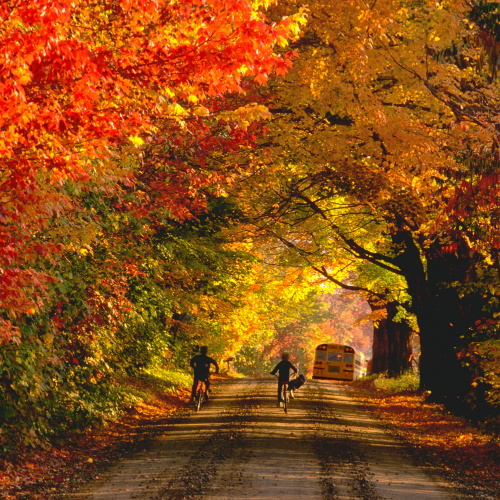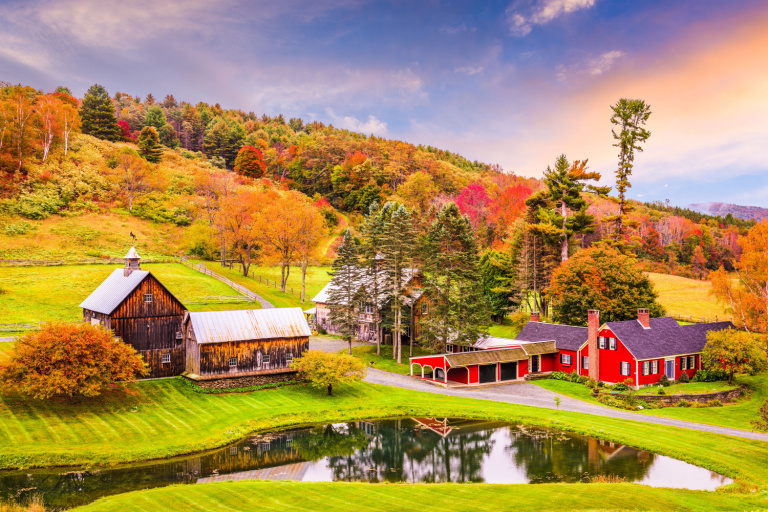
Robophoto1/Shutterstock
When Is the Best Time to Visit Vermont?
The best time to visit Texas is during the shoulder seasons of March to May and September to November. During these months, the weather is generally mild and sunny, with fewer crowds and lower prices than during the peak summer season (June to August).
Here are some of the benefits of visiting Texas during the shoulder seasons:
- Mild weather: Texas has a diverse climate, with hot, humid summers and mild winters in the east, and drier, more arid conditions in the west. The shoulder seasons offer the best of both worlds, with pleasant temperatures and less rainfall.
- Smaller crowds: The shoulder seasons are less crowded than the peak summer season, so you’ll be able to enjoy Texas’ popular tourist attractions without having to deal with large crowds. This is especially important if you’re visiting popular destinations like Austin, San Antonio, and Dallas.
- Lower prices: Prices for flights, accommodation, and activities are generally lower during the shoulder seasons than during the peak summer season. This means you can save money on your trip without having to sacrifice quality.
Here are some specific examples of how you can enjoy the most of Texas during the shoulder seasons:
- Spring (March to May): The weather in spring is typically sunny and mild, with occasional showers. This is a great time to visit for wildflowers in bloom, hiking in the state parks, and attending the many festivals that are held throughout the state, such as the Houston Livestock Show and Rodeo and the South by Southwest festival.
- Autumn (September to November): The weather in autumn is also typically sunny and mild, with occasional showers. This is a great time to visit for leaf peeping in the Hill Country, attending the State Fair of Texas, and visiting the pumpkin patches and haunted houses throughout the state.
While there are many great times to visit Texas, if you’re looking for the best weather and the most opportunities to enjoy the state’s outdoor activities, then we recommend visiting during the shoulder seasons of spring and autumn.
 Average Temperatures by Month
Average Temperatures by Month
|
Jan |
Feb |
Mar |
Apr |
May |
Jun |
Jul |
Aug |
Sep |
Oct |
Nov |
Dec |
| Fahrenheit |
16°
|
20°
|
30°
|
43°
|
54°
|
64°
|
70°
|
69°
|
61°
|
49°
|
38°
|
26°
|
| Celsius |
-9°
|
-7°
|
-1°
|
6°
|
12°
|
18°
|
21°
|
21°
|
16°
|
9°
|
3°
|
-3°
|
Climate in Vermont
Summer Season in Vermont
Vermont's summer season, from June to August, offers mild and pleasant weather, with temperatures typically ranging from 70°F to 80°F. It's an ideal time for outdoor activities, exploring the state's natural beauty, and enjoying its charming towns and cultural events. The mild and sunny weather is perfect for experiencing the picturesque landscapes of Vermont.
Rainy Season in Vermont
Vermont experiences rainfall throughout the year, with slightly more precipitation in the late spring and early autumn months. While there isn't a distinct rainy season, visitors should be prepared for occasional showers, particularly in May and September.
Winter Season in Vermont
Vermont's winter season, from December to February, is cold and snowy, especially in the mountainous areas. Temperatures can range from 20°F to 35°F in the valleys and drop lower in higher elevations. This period is perfect for winter sports enthusiasts, with numerous ski resorts and opportunities for skiing and snowboarding. It's also a great time for holiday festivities and enjoying the state's cozy, snow-covered landscapes.
Our Recommendations
| Destination |
Jan |
Feb |
Mar |
Apr |
May |
Jun |
Jul |
Aug |
Sep |
Oct |
Nov |
Dec |
| Vermont |
 |
 |
 |
 |
 |
 |
 |
 |
 |
 |
 |
 |






